Plants for retaining walls: 12 ways to brighten your boundary
Our pick of the best plants for retaining walls will add color, texture and interest to terraces and boundaries
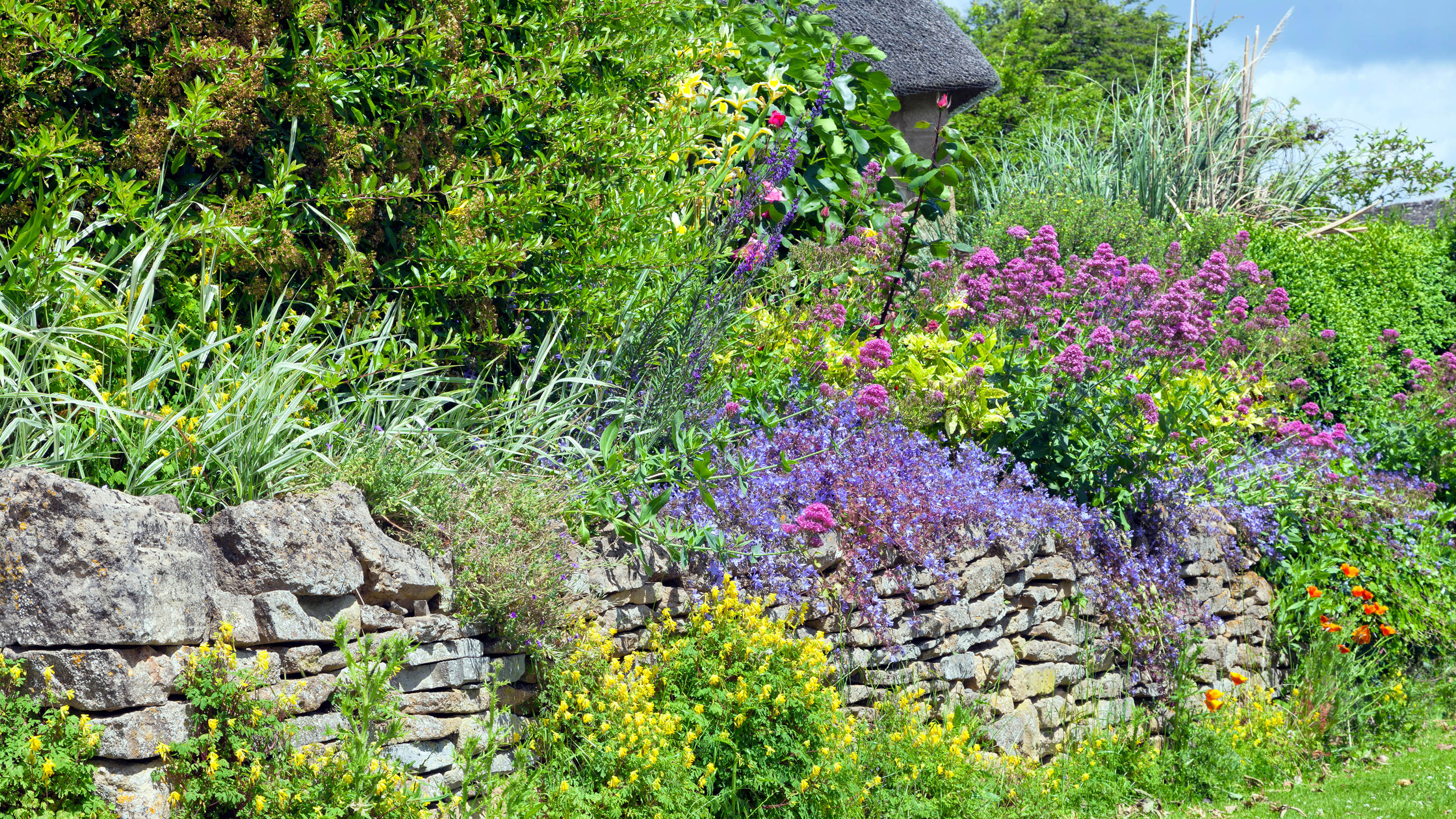

Plants for retaining walls which have a dramatic cascading habit can be employed to liven up bland patches in your boundaries, and add color, texture, scent, or wildlife appeal to the backyard.
Retaining walls against banks or terraced levels can often only be planted from above, making plants that creep or trail ideal choices. Over time, they will grow down the wall in attractive waterfalls of foliage and flowers. Larger climbing plants can be employed if the wall is high or where full coverage is required.
Select the right plants for growing in walls which are in keeping with your garden’s style and suit the growing conditions. Then you can look forward to your retaining wall ideas looking as beautiful as the flower borders in no time.
Brighten up boundaries with these plants for retaining walls
If you want instant impact with your plants for retaining walls, go for cascading annuals (such as lobelia or nasturtium) next to your new cascading perennials or shrubs – the annuals will create color and size within weeks, providing interest until the permanent plants are established.
1. Prostrate rosemary
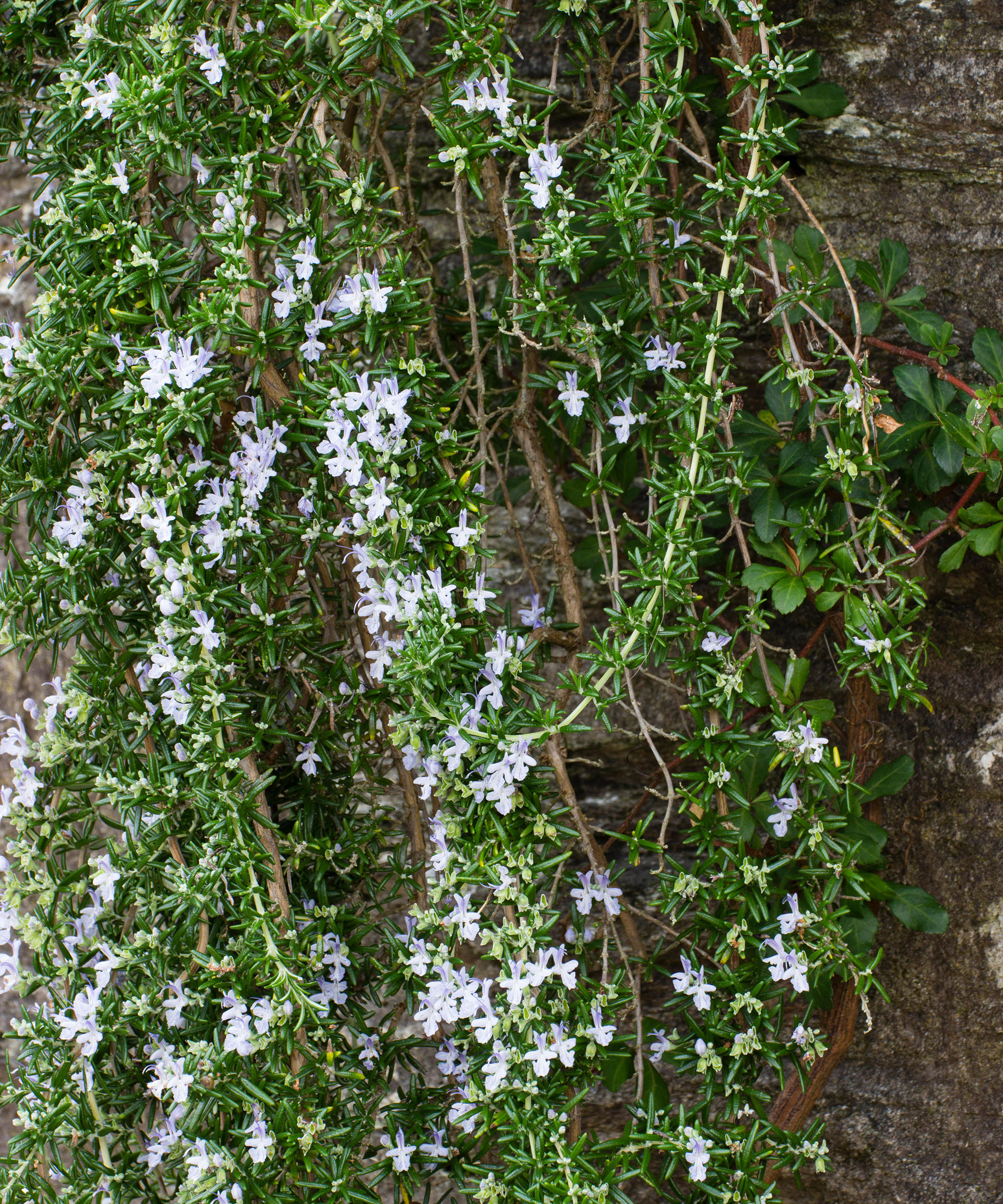
- Hardiness: USDA 7-10 (UK H4)
- Height: 12in (30cm)
- Spread: 4ft (1.2m)
- Best for: Wildlife
The benefits of this plant for your garden wall ideas are scent, color and an abundance of pollinators. Must-have plants for retaining walls in Mediterranean-style gardens, the spreading form of common rosemary has wonderful aromatic dark-green leaves and soft-blue flowers that are visited by bees in spring and early summer, and again in fall, when the plant often re-flowers.
Salvia rosmarinus Prostrata Group (syn. Rosmarinus officinalis Prostratus Group) is happiest in poor, well-drained soil at the top of a sheltered sunny wall. Over time, it will weep attractively over it. Pruning is rarely needed, but if necessary, trim after it has finished flowering.
2. Nasturtium
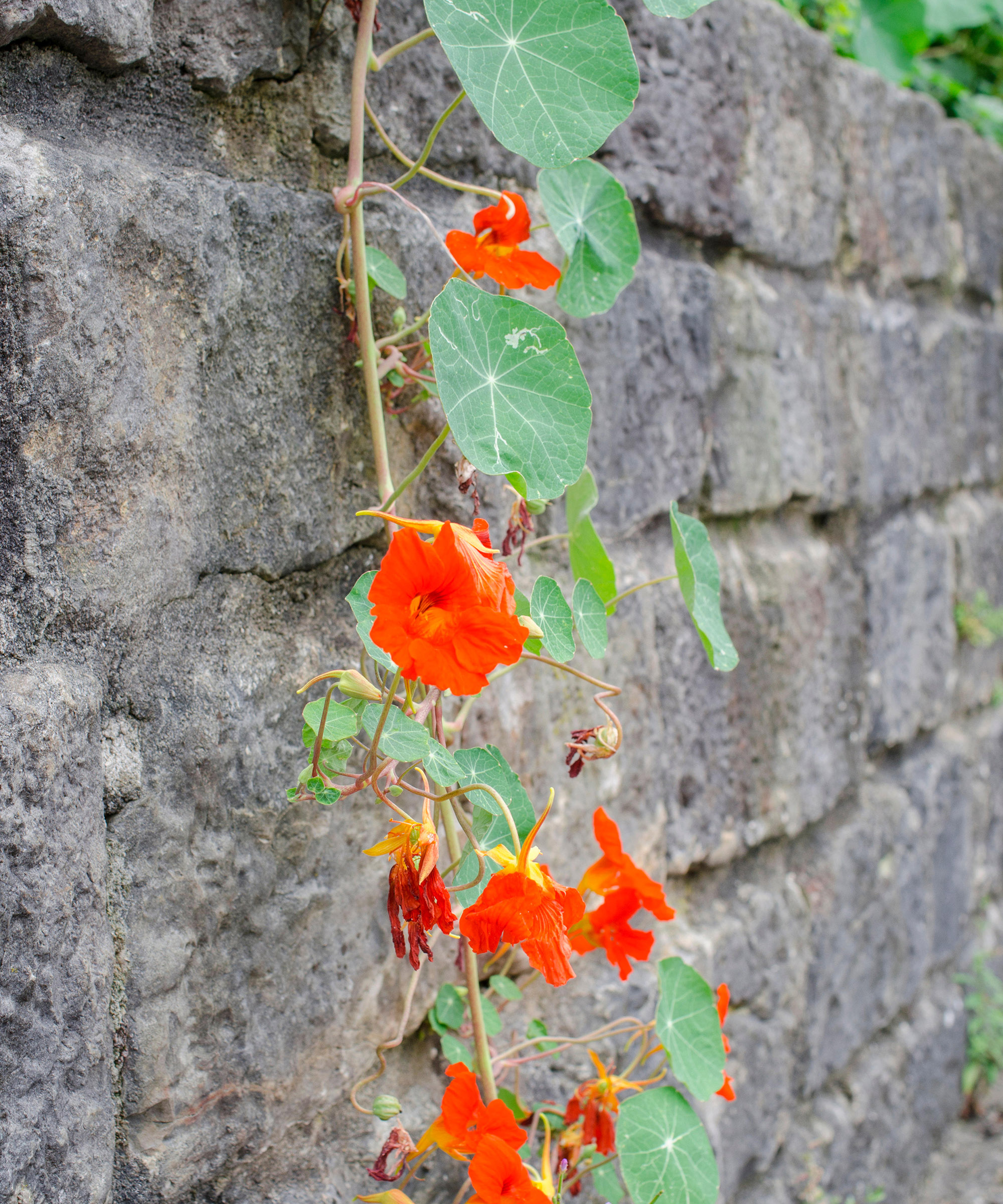
- Hardiness: USDA 2-11 (UK H3)
- Height: 18in (45cm)
- Spread: 2ft (60cm)
- Best for: Color
Trailing annual nasturtiums (Tropaeolum majus) are easy to grow and produce a cascade of bold color from midsummer into fall. The bold orange flowers will really brighten up the entrance to your home if you decide to grow them over your front garden wall. There is a trailing perennial form for low walls: T. polyphyllum, which has glaucous foliage and golden flowers.
Sow annual nasturtiums under cover in early or mid-spring or sow direct in late spring or early summer; alternatively, buy them as bedding plants in early summer and plant in retentive, well-drained soil atop a retaining sunny wall. Protect from slugs. Plant T. polyphyllum in the fall.
3. Snow-in-summer
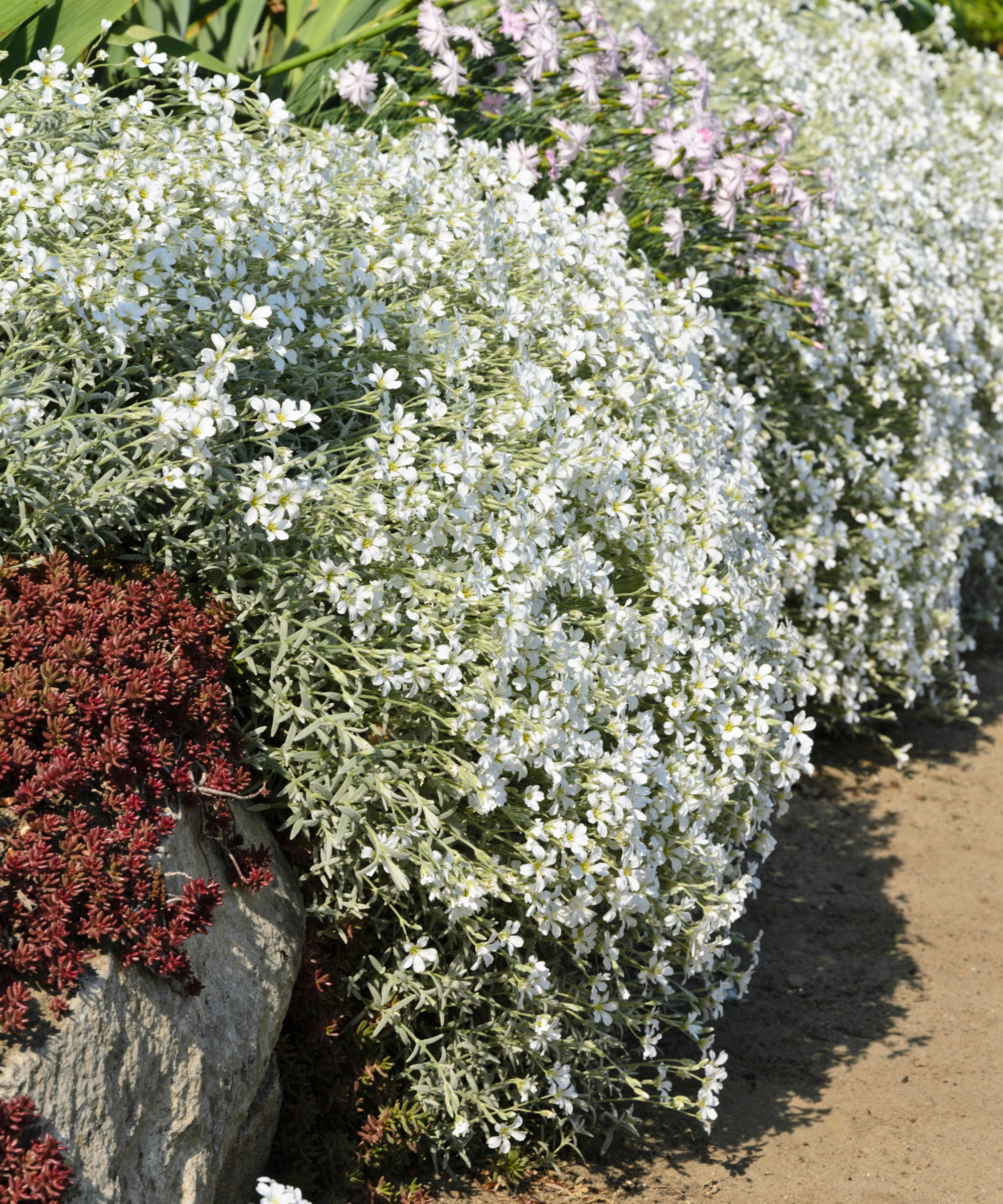
- Hardiness: USDA 3-7 (UK H7)
- Height: 6in (15cm)
- Spread: 5ft (1.5m)
- Best for: Urban elegance
With white flowers above silver foliage, Cerastium tomentosum looks good in sunlight and moonlight when it blooms in summer. This mat-forming short-lived Italian perennial cascades over sun-baked stone garden walls and spreads with gusto in the right conditions.
There are less rampant varieties, including C. tomentosum var. columnae and ‘Yo Yo’, if you only have a short wall to prettify. Cerastium loves sandy soil, but any very well-drained soil at the top of a retaining wall in full sun will suit. Trim after flowering, if necessary. Deadhead if you want to prevent self-seeding.
4. Rose

- Hardiness: USDA 4-9 (UK H7)
- Height: 6-20ft (2-6m)
- Spread: 6-15ft (2-4.5m)
- Best for: Scent
A dull stretch of wall is one of the biggest retaining wall problems, but a solution could be to cover it with floral plants which have vigorous spreading habits. Rambling and climbing roses are ideal for planting at the top of sunny retaining walls, over which they will cascade with summer flowers. Many are scented and some produce red hips that feed birds in the fall.
‘Francis E. Lester’ (white-pink) is ideal for a large wall; while ‘Blush Noisette’ (sugar-pink and white) and 'Ghislaine de Féligonde’ (apricot and cream) are shorter, making them suitable for lower walls. Provide trellis or wires to tie the rose in to, unless you want a lax flowering tumble. Prune climbers in late winter and ramblers in late fall.
5. Silver nickel vine
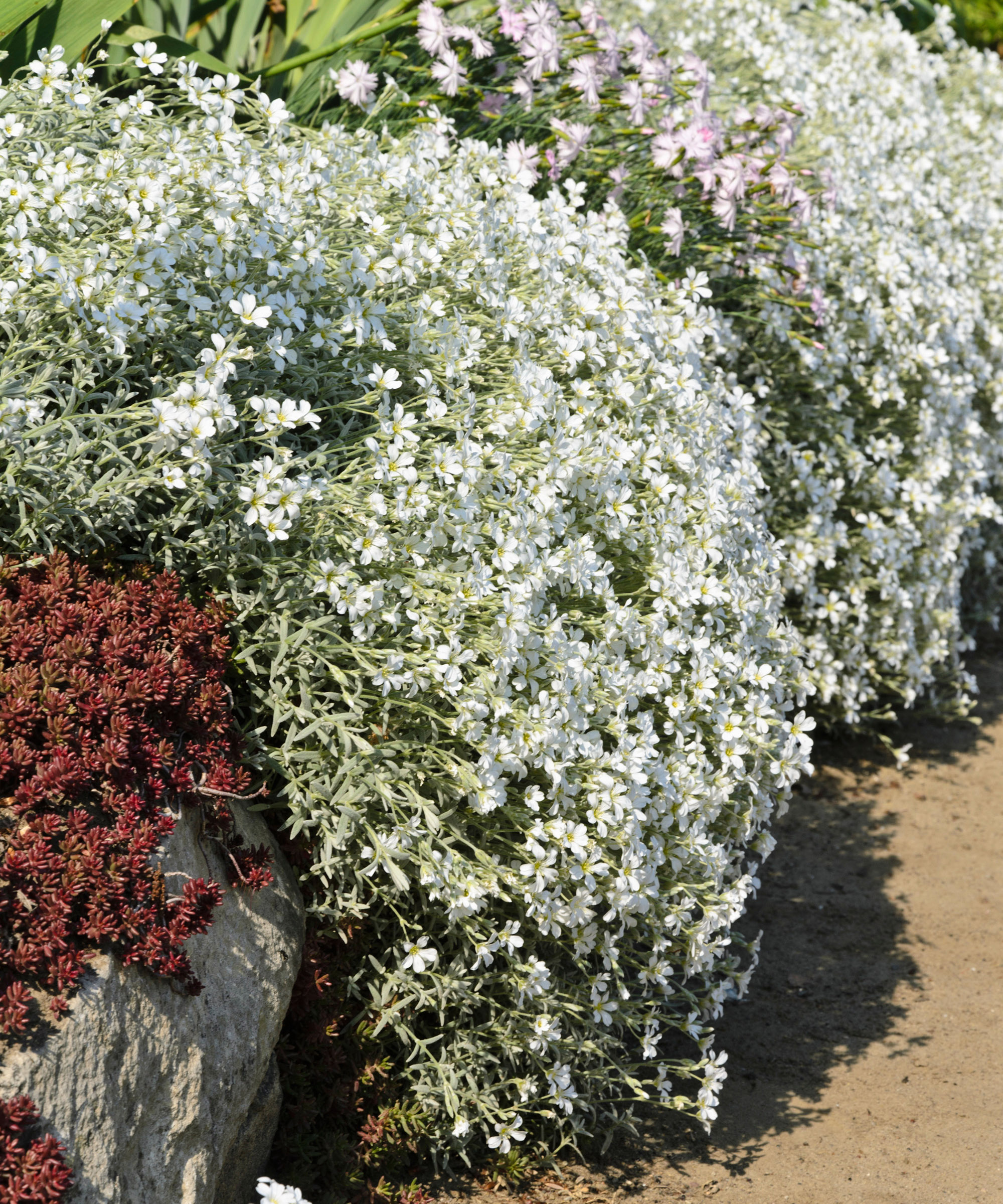
- Hardiness: USDA 10-12 (UK H2)
- Height: 4in (10cm)
- Spread: 4ft (1.2m)
- Best for: Foliage
Dichondra argentea make fabulous trailing plants for retaining walls which form a dense length of green-grey leaves, like a thick mane of silver hair, from spring into fall. It is a tender perennial from Central and South America that is usually grown as an annual in cool climates (such as the northern US and the UK).
Varieties such as 'Silver Falls’ are readily available as bedding plants in late spring or early summer and are ideal for planting in well-drained soil at the top of a sheltered retaining wall in sun or semi-shade. Perfect for growing in the gaps between young cascading perennials or shrubs for quick impact.
6. Bellflower
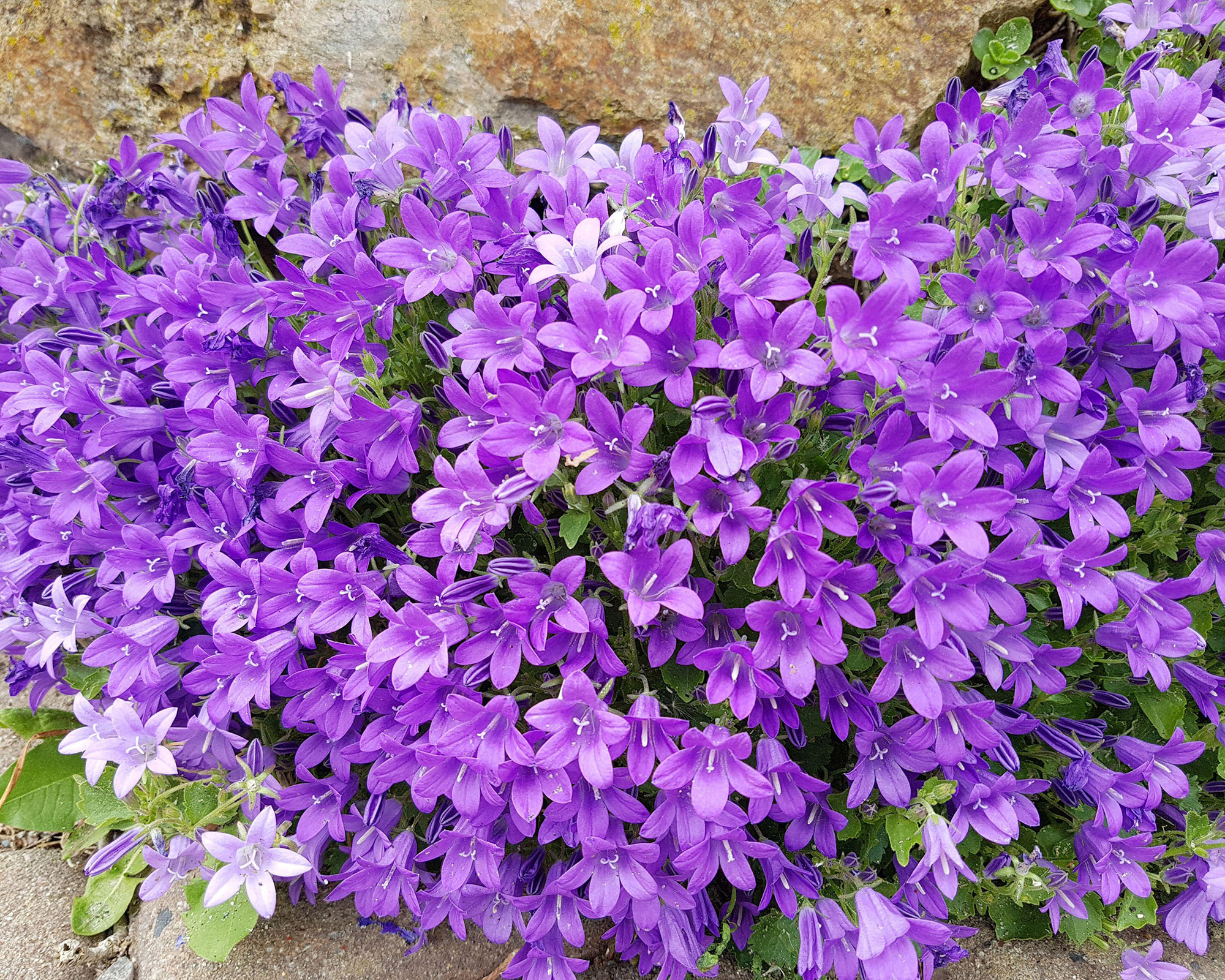
- Hardiness: USDA 3-8 (UK H5)
- Height: 6in (15cm)
- Spread: 2ft (60cm)
- Best for: Cottage garden style
In late spring and summer, wall campanulas are a mass of adorable lavender-blue bells that are visited by bees. The wall bellflower (Campanula portenschlagiana) is evergreen and the trailing bellflower (C. poscharskyana) is perennial, but flowers for longer.
Perfect plants for growing in walls, hailing from the mountains of Croatia, they should be planted in very well-drained soil at the top of a wall in sun or semi-shade or inserted into its crevices. These plants for garden walls will grow over it and seed in its nooks and crannies. Protect from slugs and trim in early spring or fall if plants look untidy.
7. Firecracker

- Hardiness: USDA 9-11 (UK H1C)
- Height: 3ft (90cm)
- Spread: 5ft (1.5m)
- Best for: Hummingbirds
Russelia equisetiformis is a superb sub-shrub from Mexico that produces incredible color for months. The broom-like evergreen foliage pours over retaining walls like a fountain and – from late spring to fall – is paired with long tubular scarlet flowers that hummingbirds feed on.
In cool regions, such as the northern US and the UK, it can be grown over the raised bed wall of a greenhouse or in pots that are placed atop outdoor walls in the warmer days of spring and overwintered indoors. In warm climates, it can be planted at the top of a sheltered wall in full sun.
8. Ivy

- Hardiness: USDA 4-9 (UK H5)
- Height: 6-20ft (2-8m)
- Spread: 6-20ft (2-8m)
- Best for: Year-round color
This self-clinging evergreen climber looks good all year. It copes well in shade so species of Hedera make ideal plants for north facing walls. Vigorous forms (such as green and yellow Hedera colchica 'Sulphur Heart’) provide nesting and food for wildlife and suit tall or long retaining walls. The slow-growing golden Hedera helix ‘Buttercup' is ideal for smaller walls.
Avoid species that are considered to be invasive plants in your area – for instance, in the US, English ivy (Hedera helix) should not be grown, unless it is a compact, slow form (such as ‘Buttercup’). Plant in sun or shade at the top of bottom of a retaining wall, and trim when necessary.
9. Gromwell

- Hardiness: USDA 6-8 (UK H5)
- Height: 6in (15cm)
- Spread: 2ft (60cm)
- Best for: Acid soil
From spring to summer, Glandora prostrata (syn. Lithodora diffusa) is coated in incredible cobalt-blue flowers that are shown off by the rich-green foliage. These prostrate evergreen plants for retaining walls love acid soil and look fabulous growing over retaining walls in a dense carpet of breathtaking color.
‘Heavenly Blue’ is one of the best varieties of plants for growing in walls. In the wild, gromwell thrives in the open stony ground of the sunny Mediterranean, so plant it in very well-drained soil at the top of a wall in sun and allow it plenty of room without competition from other plants.
So if you're planning to build a garden wall, it might be worth leaving a portion at the top where you can add soil for growing plants.
10. Broad-leaved glaucous spurge

- Hardiness: USDA 5-9 (UK H5)
- Height: 6in (15cm)
- Spread: 12in (30cm)
- Best for: Architectural impact
These wonderfully weird evergreen perennial plants for growing in walls produce trailing stems of architectural foliage, which dangle over the tops of walls. Resembling a baby dinosaur, its blue-green scale-like leaves look good all year, but it shines in spring when it is topped with gold-lime yellow flower bracts.
Euphorbia myrsinites hails from the rocky, sunny eastern Mediterranean, so plant it in very well-drained soil in full sun – a gravel garden would be ideal. Don’t bother protecting it from slugs, who stay well clear of this spiky stalwart. In the right conditions, it may self-sow.
11. Parrot’s beak

- Hardiness: USDA 10-12 (UK H2)
- Height: 8in (20cm)
- Spread: 2ft (60cm)
- Best for: Exotic flowers
The claw-like exotic flowers of Lotus berthelotii are orange or red and resemble tiny flames when they bloom in late spring and summer. These tropical plants are offset beautifully by the silvery needle foliage, making this trailing evergreen shrub a stunning choice of plants for retaining walls.
Native to the Canary Islands, it is best grown as an annual bedding plant in cool, temperate regions (such as the northern US and the UK). L. berthelotii deep red-flowered is one of the best forms to grow and should be planted in well-drained soil types at the top of a sheltered sunny retaining wall.
12. Mexican fleabane

- Hardiness: USDA 5-10 (UK H5)
- Height: 12in (30cm)
- Spread: 3ft (90cm)
- Best for: Flower power
This cottage garden plant earns its place as one of the best plants for retaining walls, flowering for months – sometimes from spring right into the end of fall – and sowing itself around the garden. It loves cracks and crevices in paving and walls, where it forms a spreading airy mat of adorable pink and white daisies.
Erigeron karvinskianus is the species, but the lesser known variety ‘Lavender Lady’ has pale pink-purple daisies. Plant them in well-drained soil at the top of retaining walls, in gaps in walls, or the corners of steps as edging plants. Trim after flowering to keep the plants bushy.
Can you plant on a retaining wall?
Yes, potentially in three ways:
- From above: Most retaining walls have soil at the top of the wall, which can be a haven to plants for growing in walls. From there, suitable creeping and trailing plants will cascade attractively down the wall. This is the most common method of prettifying or covering retaining walls with plants.
- From below: It is sometimes possible to plant climbers at the base of the wall. Self-clinging plants (such as ivy) will make their own way up; alternatively, climbing plants such as roses can be trained up the wall by attaching trellis or wires and tying them into it as they climb.
- Within the wall: If you have a wall that has crevices in it, suitable plants for retaining walls (such as wall campanula) can be planted into those gaps, from where they will cascade down. Once established many wall plants (such as Mexican fleabane) will self-sow into the nooks and crannies of walls.
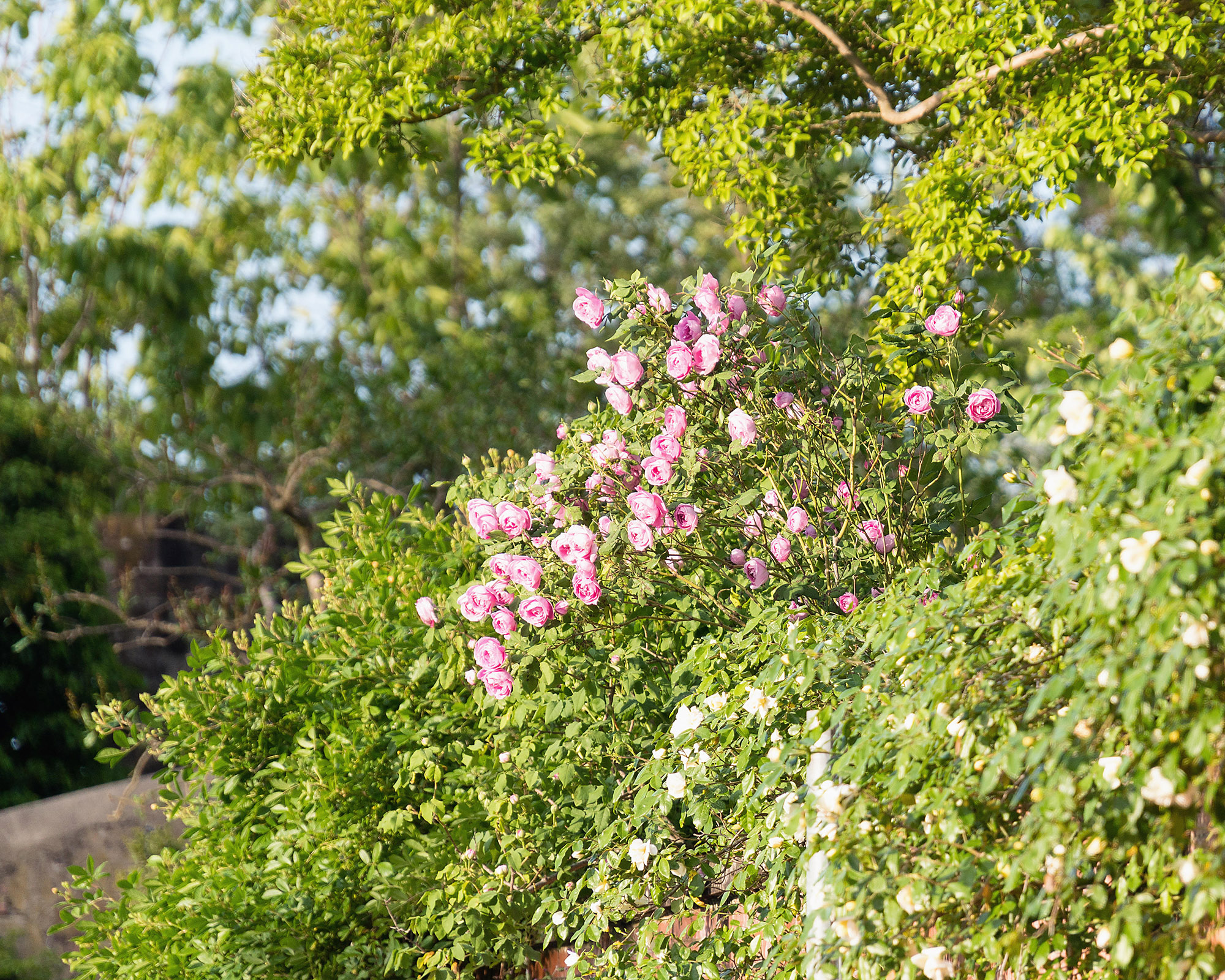
What can I plant on a high retaining wall?
If planting is possible from below, large self-clinging climbers (such as Persian ivy and creeping fig) are an option, or trellis or wires can be fitted to allow climbers that require tying in (such as certain types of roses) or climbers that twine themselves (such as clematis) to be planted.
But if planting is only possible from above, a climber could be sent growing downwards. ‘I have used star jasmine (Trachelospermum jasminoides) as a ‘waterfall’ along a high wall where planting below was not possible,’ says Los Angeles-based landscape designer Laura Morton. ‘I purchased pre-espaliered plants on a trellis and then removed the trellis after planting, allowing the vines to cascade over the wall. Using landscape pins to anchor the spread, the result is almost instant.’

Can I plant a tree next to a retaining wall?
If possible, plant trees in front of – not behind – the retaining wall in order to minimise potential damage from the tree’s roots. Don’t plant near any pipes, if you have installed a drainage system in or around your retaining walls.
If you can, avoid planting right next to the wall, and opt for a tree that won’t get too big in the long run: ‘A smaller tree such as a birch (Betula), cherry (Prunus) or rowan (Sorbus) can be planted closer because the roots are less likely to cause any damage,’ says Tony Kirkham, Head of the Arboretum, Gardens and Horticulture Services at Royal Botanic Gardens, Kew.
You could also use the tree as a climber to prettify the retaining wall – for instance, an apple or a pear tree could be trained as an elegant espalier against a large retaining wall, and they can be purchased ready-trained to speed up the process. If the retaining walls are low, a step-over apple or pear could be grown instead, and these are also available ready-trained.

Teresa has worked as an Editor on a number of gardening magazines for three years now. So she is lucky enough to see and write about gardening across all sizes, budgets and abilities. She recently moved into her first home and the garden is a real project! Currently she is relishing planning her own design and planting schemes. What she is most passionate about when it comes to gardening are the positive effects it has on our mental health to grow and care for plants, as well as being great for the environment too and help provide food and shelter for wildlife.
